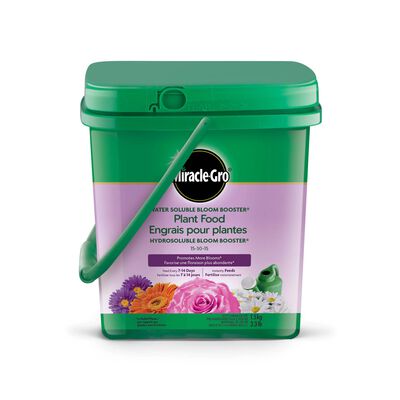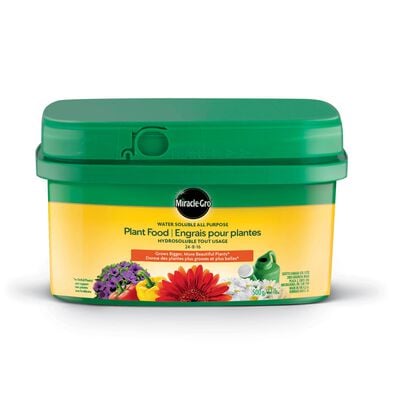
How to Care for Your Summer Garden
It's summer! Though your garden is now established and growing strong, it still needs your regular attention to help it stay healthy and productive.
Whether you grow edibles or ornamentals, in the ground or in raised beds, caring for your summer garden doesn't have to be complicated. Follow this guide to develop good summer garden care habits that will benefit your plants all the way into fall. (Do you have a container garden? Get container-specific watering and feeding advice at How to Keep Planted Containers Looking Great this Summer.)
Water and Feed
Just like humans, outdoor plants require plenty of water and a balance of nutrients to be at their best. Summer weather can dry out soil quickly, especially in containers and raised bed gardens. Plants also deplete the soil's vital nutrients simply by growing. You can supply the moisture and food your plants need by watering and fertilizing regularly. Plus, regular feeding helps your plants grow bigger, stronger, more productive, and better equipped to handle summer stress.
Your summer watering schedule will vary depending upon your growing zone and weather conditions, and you'll need to stay vigilant. Test whether you need to water by feeling the soil—some plants wilt naturally in hot weather, and overwatering can also cause wilting, so don't rely on looks alone! Whenever the top inch of soil surface feels dry, give the soil a good soaking to ensure that moisture reaches all the way to plants' deepest roots. Make sure to aim the flow of water at the base of your plants so the leaves stay dry, which helps prevent disease. Plan to water your garden thoroughly about twice each week, or more in especially hot, dry weather. If you're growing in containers, you may need to water daily.
Water-soluble plant foods make it easy to fertilize in summer. Simply add them to your watering can or sprayer during your regular watering routine every one to two weeks. Pick the right food for whatever you're growing—Miracle-Gro® Water Soluble Bloom Booster® Flower Food for flowers, or Miracle-Gro® Water Soluble Tomato, Fruit & Vegetable Plant Food for edibles. Or, to streamline feeding even more, use Miracle-Gro® Water Soluble All Purpose Plant Food when watering your entire yard. It's safe for all plants, including vegetables, trees, and shrubs.
Read our Guide to Garden Watering Methods for more watering tips and tricks, including shortcuts like sprinklers, drip irrigation, and soaker hoses.
Prevent and Control Weeds
If you've kept up with a regular weeding routine, you'll be rewarded as the summer goes on. Frequent weeding stops weeds from reseeding and multiplying, making for less of a chore over time. Your plants help, too, by growing foliage that shades weeds and slows their growth.
Keep pulling those weeds to stop them from stealing nutrients and moisture meant for your healthy plants! When removing taproot weeds like dandelions, dig down deep and remove the entire root. It's easiest to do this when the soil is moist, like after a rain shower.
A protective covering of clean, natural mulch—like bark, pine straw, dried grass, shredded leaves, or premium bagged mulch like Scotts® Nature Scapes® Colour Enhanced Mulch—helps stop weed growth while also keeping soil cool and moist. Apply it in an even layer about 1 to 2 inches deep, keeping it away from plant stems. (Whatever mulch you choose, ensure that it's seed-free so you don't introduce new weeds into your garden.) To weed beneath the mulch, simply rake it out of the way and replace it when you're done. Some gardeners like to put newspaper or cardboard beneath their mulch to further reduce weed growth. Learn more about mulch's many benefits at Why You Should Mulch.
Watch and Protect
Gardening in summer requires a watchful eye. You can prevent plant damage by monitoring your garden for early signs of stress, pest damage, and disease.
Protecting plants from summer weather extremes like drought and heat waves may mean shading them, especially in the warmest parts of the country and during the hottest portion of the day. Lightweight, loose coverings provide shelter from the baking sun, which can cause sunburn on delicate foliage and ripening fruits and vegetables. Shading also lowers air temperature and helps maintain humidity around plants. Position sheets, row covers, or shade cloths horizontally or vertically—supported by stakes, with improvised materials like chairs and sticks, or strategically hung from clothesline—to allow air and helpful pollinators to circulate. Remove the covers when they're no longer needed. After all, sunlight helps your plants grow!
Regularly inspect plants and the surrounding soil for insect and animal damage. Spots, holes, broken stems, and visible pests (like aphids and caterpillars) on leaves may indicate problems that require action. Remove and dispose of harmful pests, but leave the good guys, like ladybugs, butterflies, and bees. If vegetables, berries, and flower heads mysteriously disappear, or you see torn or bitten foliage, it's likely that critters like rabbits, birds, or deer have stopped by for a snack. Consider fencing or netting around the plants they find most tempting.
Be on the lookout for signs of plant damage and disease not caused by pests. Brown or yellowed leaves, pale or dropped leaves, slowed growth, fewer flowers, droopy stems, and powdery foliage can be signs of a number of different problems, including overwatering, underwatering, a lack of nutrients, or disease. Remove discolored leaves and dying plants as you see them, and take quick action to diagnose and treat the cause. That way, you'll have a better chance at stopping its spread.
Groom and Tidy
Cleaning your garden isn't just a task for early spring or late fall. Not only does a tidy garden look nicer, but it also keeps your plants and soil healthier!
Regular grooming tasks like deadheading annuals (removing spent flowers), pinching perennials, and harvesting fruits and vegetables encourages continued, vigorous growth while making plants less vulnerable to problems. Pulling weeds regularly, and removing diseased or severely damaged plants promptly, helps create a healthy environment where pests and bacteria can't hide.
Plan and Plant
Summer planting can take many forms, bringing a new burst of color to your ornamental garden and extending your vegetable harvest.
Plan to add annual flowers and fall harvest vegetables to maximize your garden. Great flowering plants for summer gardens include annuals like petunias, marigolds, and impatiens, which will bloom regularly for months. The second half of summer is also the time to plant cool weather vegetables like spinach, broccoli, and kale, which will mature for fall harvesting and can withstand fall's light frosts. Depending upon where you live, you'll want to plant most fall harvest vegetables in July or August.
Many vegetable gardeners also practice succession planting, planting one crop after another has been harvested, to keep their gardens producing for months.
By planning ahead, you can refresh your garden in the summer and extend your growing season well into the fall.


